I have a bit of history with Enchanters. I played the original small box years ago because one of my buddies had a copy. At first glance, it looked like every other drafting game with its row of cards for everyone to examine and buy with Crystals. Every single card you buy goes in one of three stacks. The idea here is you would build up your stacks to become more powerful and later on, slay some monsters.
I played this game twice and I wanted it. Sadly, fate had other ideas.
Through the magic of Kickstarter, a small Polish company got this bad boy printed. Yet, a small company means limited distribution. Despite my efforts, I couldn’t find this game at any local stores in my area or in any math trades. I had a better chance of finding a Unicorn with self-esteem issues.
Many years went by, and without warning, someone was trying to sell this game in my area. It wasn’t just the base game. It was the Overlords expansion and the Odyssey expansion from one of their later Kickstarters, still in shrink. I had a copy of Evil Dead 2 with the Extra Pack that I was itching to get rid of, so I proposed a trade. He accepted it.
I went through a lot to grab this game, so was it worth the trouble?
Every Game Needs a Plot
Before we dive into that answer, we need to talk about the game itself to understand the context. Just like every other review, we are going to start with the setting itself.
A village is under attack by a swarm of monsters heading its way. The reason? Well, the rulebook doesn’t really say. For all we know, it’s either gambling debt, a joke taken the wrong way, or some political allegory that I’m not smart enough to figure out. Either way, you and your friends want to save the village.
This isn’t a cooperative game, though. Like any other fantasy story, there is always that one character in a cast that everyone wants to write fanfiction about or draw fanart of. Yes, THE character of the story. You want to be that character, and this is determined by victory points. You get these victory points by slapping monsters in the face and holding a kick-ass item.
The fascinating thing is both the village and the monsters have unique mechanisms. As part of the setup, you will draw one of 30 Village cards. Each of these Village cards, besides sporting glorious artwork, will have a set of different types of Rest actions you can use and an end game scoring goal.

For The Hoard
As for the swarm, there are over 20 “Kingdom” decks that have their own set of monsters, items, and enchantments. Assuming you are playing a four-player game, you are going to take 4 random Kingdom decks and give them a good shuffle as one large Journey deck.
These Kingdom cards aren’t just some filler content. Every single Kingdom deck plays around a particular gimmick or mechanism that you must overcome. For example, the Bandits love to steal Crystals or cards from other players, Demons want to reward you with negative points, and the Slime will make it harder for you to attack monsters. Replayability is too weak of a word to describe all of this, and we’re just scratching the surface.
Once the deck has been combined and shuffled, you will draw a line of cards to represent the Journey Track, and the game is ready to play. On your turn, you have two simple choices: Rest or Journey. Journey allows you to grab a card from the track at a cost. Newer cards drawn from the decks are more expensive than older cards, solving the top decking issue that often prevails in games with similar randomized market rows. Resting gives you a bonus such as healing or crystals while discarding the leftmost card of the Journey track. After your turn, the cards slide towards the left, and you draw another from the deck. Once all the cards are gone, the game ends.
Easier Than Boiling Water
One of the most famous lines the publisher likes to glue on this game is “teaching the game in 2 minutes”, and it’s pretty close to that mark. The only pieces of the complexity found here are mainly with the icons and the timing of the card effects. Fortunately, everyone gets a player aid that describes these symbols, and there is a helpful Timing guide at the very end of the Overlords rulebook. Once you internalize the mechanism and timings, the game accelerates to a lively pace.
With the basic outline out of the way, let’s get into the technical details of all these rules and mechanisms at play.
The three stacks I’ve mentioned previously are your Items, Enchantments, and Monster pile. Your Items and Enchantments have a basic card with no powers. The Monster pile, like my Tinder matches, is empty.

Crafting Your Nonsense
The core concept behind this game is that you will buy cards from the Journey Track and add them to your stack depending on the card type. You start out with a basic Item and Enchantment card to start your stacks. Whenever you buy a card, they go on top of the appropriate stack, partially covering the card beneath. The challenge here is that Items and Enchantments tend to have potent abilities when they are on top of the stack, yet you need passive attack and defense bonuses to help you defeat monsters, which can only be done by covering your cards. It’s a game about making sacrifices to become stronger.
It isn’t just the sacrifices you need to consider, but the timing as well. Since every single turn means the track is moving forward, it also means Items and Enchantments remaining on the Journey Track become cheaper. Cheaper becomes inviting for your opponents. Throw in effects such as a new end game scoring or a powerful ability suitable for the current board state, and suddenly this simple game becomes an alluring one.
Of course, when the monsters arrive, things change. You still have to spend Crystals to reach those monster cards, but now you must pay attention to your Attack and Defense stats. Each monster has a Health stat, and your Attack must be equal or higher to defeat them. Since monsters don’t like dying, they strike back with their Damage stat versus your Defense stat. If their Damage exceeds your Defense, you will receive wounds that count against your points at the end of the game. The only way to heal them is by either grabbing cards that allow you to do that, if they’re even available, or by resting.
What’s Another Word for Elegance?
What’s fantastic about this entire framework is it manages to retain the positives of drafting games and tableau builders while carving its own identity. Your purchasing power or actions do not rely on a random hand of cards. You need to think like an accountant to make sure you have enough Crystals to do what you need to do and time your Rest actions properly. Having full control over crafting combos from all the enchantments and item purchases means you are the architect of your success or failure. It is a game that has the dynamics and randomization of a drafting game, with the player agency of a lightweight engine builder.
I will go so far as to say there isn’t anything flawed with the design of Enchanters. It wants to be easy to teach, quick to play while presenting a farmer’s field of opportunities for you to harvest. There is nothing in the rules comprising that vision.
Yet there might be a few spots in the game that some of you might dislike due to your preferences. Think pineapple on pizza.

Inconsistent Mechanisms
An obvious example of this is the player interactions. There are plenty of Kingdom decks designed to negatively impact other players. We are talking about effects such as giving your wounds to another player, giving bad cards to other players, or outright attacking people. If you are looking for a calm game where everyone is in their own walled garden trying to win the game, you won’t find that here.
Another one is the inconsistent experience. With the numerous Kingdom cards and their little quirks, each game will be vastly different. Some decks don’t have powerful items, while others might make it a breeze to slice through the enemy. I love this because it means I can’t “go through the motions” with my decisions and evaluate the situation I am in. However, I can understand if some people might not like this.
The last one, although a bit of a grey area, is the length of the play. I’ve read some complaints that the game overstays its welcome, and I could see that for the first or second game. Beyond that, it shouldn’t take more than an hour to finish a game. The vast majority of abilities in this game are straightforward with a single sentence to describe what they do, and many of them only trigger once you buy the card. If it takes more than an hour to finish the base game, even in a four-player session, you might have a group taking too long to make a decision.
Expanding the Expansions
Everything I described so far is based on the core game itself without any of the expansion modules.
Unlike many other module-based expansions in other games, each Enchanter’s expansion came with about two or three modules with a noticeable time gap between them, meaning there was plenty of playtesting.
Unfortunately, this doesn’t mean every single module is great. The Wound deck adds a silly rule where every 10 wounds force you to draw a card, giving you a negative condition to deal with. The Event deck is shuffled into the main deck, and when drawn, an event will occur, or they will attach themselves to a particular card to give it an additional effect. Both of these modules do make the game more challenging, although at the cost of unwelcomed rules overhead.
The Odyssey expansion has the Classes & Banners module. In the original game, everyone has the same starting cards. With the use of this module, everyone will have unique starting cards, giving them additional stats and potential permanent actions to abuse throughout the game. At first, I liked this idea because these starting conditions meant you might have different tools to work with.
After a few plays, I felt more lukewarm towards the execution of this idea. Some combinations of cards were ridiculous to the point where the challenge was completely neutered or crippled the game’s pacing. One example was a Graveyard card that allowed the player to dig through the discard pile to get a card. It takes a lot longer to go through a discard pile of over 20 cards than 6 face-up cards, especially when this is done every few turns.
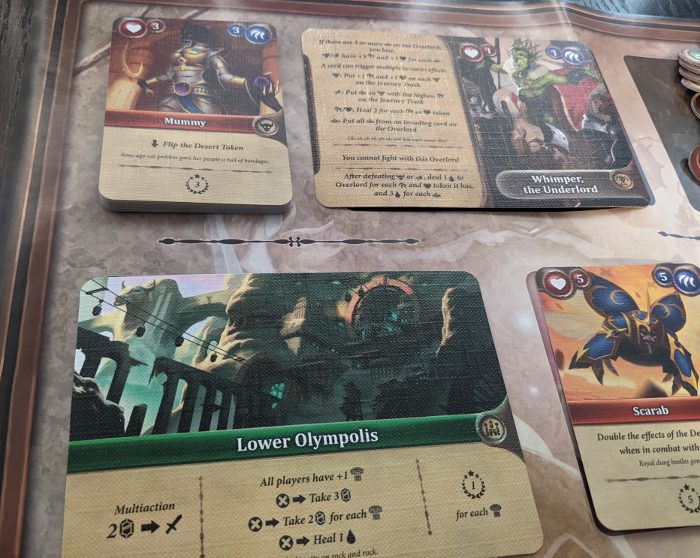
The Only Module Worth Looking At
Now that we got the bad out of the way, let’s talk about the good. The Overlords is my favorite and only recommended module out of the group. It adds an Overlord card to the mix and sets the stage of the upcoming game like the Village card. Each Overlord has a negative effect whenever a Rest action is performed and a particular card type such as a Monster is discarded. Like monsters, they have their health and damage stats. Whenever you successfully attack the Overlord, you take one of their tokens as a prize and what that token does is dependent on the Overlord. It creates complexity and is a great way to add a decent challenge without messing up the game’s integrity, unlike the Wound or Event decks.
Component Talk
The other bits are the components. I rarely talk about components in reviews because there are only so many ways I can say “this looks pretty” yet there are some areas I want to highlight here. It’s quite clear the designers behind Enchanters are big fans of games by Blizzard Entertainment as there are some obvious inspirations from World of Warcraft and Diablo. Even the flavor text printed on the cards has a more tongue-in-cheek flair to them and provides plenty of pop culture references. To top it off, all the cards have a linen finish, giving me the confidence these cards can take a beating and save me the money to buy over 700 sleeves.
Yet that linen finish also applies to both the oversized Overlord and Village cards. Thanks to that finish, these cards are warped in my copy. It was easy to bend them back to place, and since you only draw one of them for each game, it isn’t a huge deal. There is also a mat you use to form the journey track and placement for the other cards, however, it is made out of paper instead of something reliable.
The Final Draw
At first glance, Enchanters might appear that this is your garden-variety dime-a-dozen drafting game, yet that quickly changes when you realize there is no deck or hand. It is a game about becoming stronger and stronger with each bit of strength requiring you to sacrifice something. Throw in the random set of mechanisms you have to deal with in each game, and you have a solid drafting game with a simple ruleset and quick pacing.


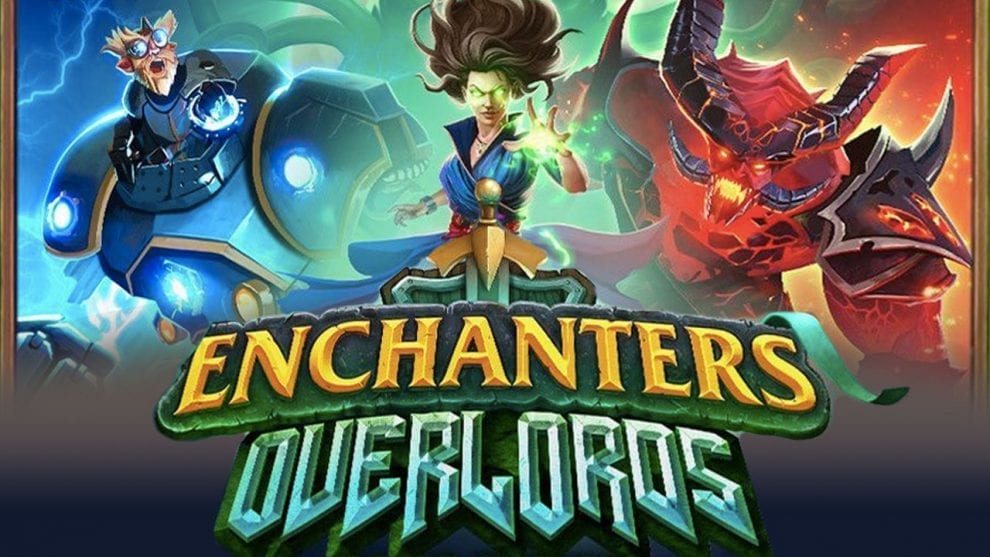
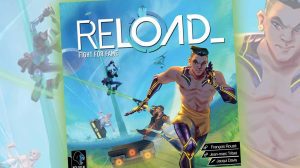
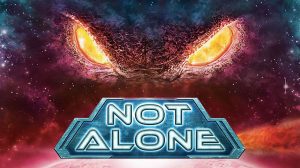

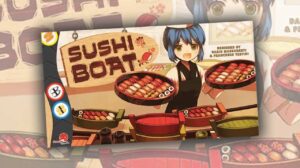




Add Comment